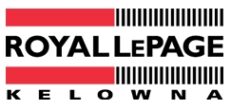How Much Do I Qualify For?
When buying a home, you consider many different factors; the style of home, how large or small of a home will best fit your needs, the community, inside or outside of town etc. However, one of the first steps is knowing what you qualify for and how much you can afford before beginning your search.
The Stress Test
To qualify for a mortgage at a bank, you will need to pass a “stress test”. The lenders need to know that you can afford your payments at the qualifying interest rate. Even if you aren’t needing mortgage loan insurance, you are required to pass the “stress test”.
If you decide you would rather use a Credit Union or an alternative lender, this step may not be required as they are not federally regulated to use a “stress test”.
A bank must use the higher interest rate of either:
- 5.25%
- the interest rate you negotiate with your lender, plus 2%
What about refinancing your home, switching lenders, or even taking out a home equity loan or home line of credit? If this is through a federally regulated bank, you are required to pass that same test.
Take the test Are You Financially Ready?
Calculating mortgage affordability
Mortgage affordability is the amount of money you are able to borrow, based on current income, debt and living expenses. The higher the mortgage you are able to borrow, the more expensive home you will be able to purchase.
Some factors that affect the maximum mortgage you can borrow are; the household income, personal monthly expenses (credit cards, car payments etc.), and household expenses (property tax, strata fees and utilities).
Using a mortgage affordability calculator will help you figure out how much you can afford based on your current situation.
Tip: Doing a simple search you will find, there are many online calculators that will help you determine what you can afford.
Estimate Affordability
Lenders look at 2 ratios to determine qualifying mortgage amounts. The Gross Debt Service (GDS) ratio and the Total Debt Service (TDS) ratio. These take into account your income, monthly housing costs and overall debt.
For a rough estimate to determine what you can afford, your monthly housing costs should be no more than 32% of your gross household income (Gross Debt Service Ratio). Your debt load, including your housing costs, should be no more than 40% or your gross household income (Total Debt Service Ratio).
While this is a general guideline, if you have good credit and a steady income you may be able to exceed these estimates.
As of July 1st, 2020, the Canada Mortgage and Housing Corporation (CMHC) implemented new ratio limits for mortgages that it insures. The new Gross Debt Service ratio limit for CMHC-insured mortgages is 35% and the new Total Debt Service Ratio limit for CMHC-insured mortgages is 42%.
The other 2 mortgage insurance providers in Canada, did not change their ratios and use a maximum of 39% GDS and 44% TDS limits.
*Any mortgage with less than a 20% down payment is considered a high-ratio mortgage, and requires you to purchase mortgage default insurance, generally referred to as CMHC insurance
Down Payment
A down payment can be used as a benchmark to determine your maximum affordability. The price formulas are:
With a down payment of $25,000 (or less)
Down Payment / 5% = Maximum Affordability
With a down payment of $25,001 (or more)
Down Payment - $25,000 / 10% + $500,000 = Maximum Affordability
Cash requirement
In addition to your down payment and CMHC insurance, you should also set aside 1.5% - 4% of your home's selling price to cover closing costs. These are payable on closing day and many home buyers forget to put aside these cash requirements.
Our Royal LePage Kelowna agents are here to help. If you have financial questions, they will connect you with a professional with the answers you need.


